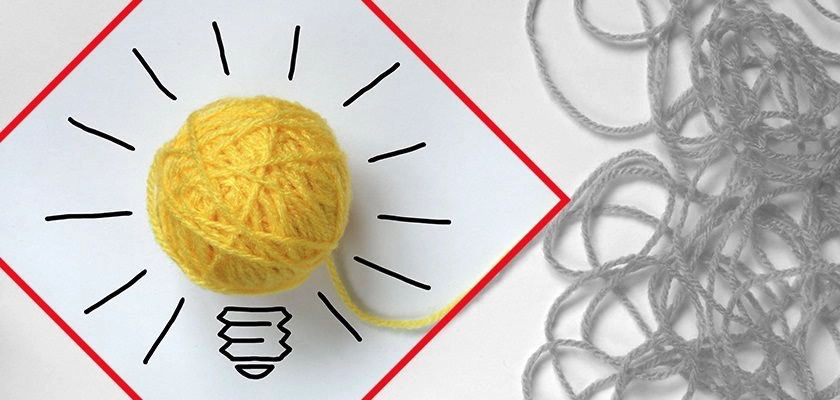Engaging Students Through a Flipped Classroom
A flipped classroom allows students to lead the discussion on material. But some planning needs to happen to insure students are prepared.

Student engagement in the classroom is a top concern for many instructors. Long lectures with minimal student interaction has proven not to be effective with the current generation of students. Freeman, et al. concluded in this study that failure rates are 55% higher with traditional lectures as opposed to active learning1. After all, how can students be actively engaged in the material, and thereby the class if they are experiencing the material for the first time?
An alternative model, called a flipped classroom, is one way to remedy this disconnect.
Flipping a classroom involves having the students engage with the content on their own before the class. This allows the students time to read and absorb the material and to formulate their own ideas and questions before class, thus becoming more engaged in the class discussion. And, instructors no longer have to be a “talking head” at the front of the class trying to cover the entire breadth of course material.
Flipping the classroom, however, does require some careful planning and thought. After all in a study done by Baier, et al., only 24% of students completed the assigned reading before class and 40% waited until they were studying for a test2. In order for a flipped class model to work, and for your students to come to class more prepared, consider these three critical ideas:
Incentivizing the completion of pre-class work
We hold these truths to be self-evident: students are more likely to complete the pre-class work if there are points attached. Yet many classes continue to have readings listed in the syllabus without any point incentive. When flipping the classroom, the addition of point values attached to readings is vital.
Many textbooks now have a digital option for students that includes assignable readings. McGraw-Hill Education’s Connect ®, for example, that has an e-text called SmartBook, which individualized each chapter through an adaptive learning algorithm, personalizing the lesson and engagement for each student. These chapters are assignable, and points can be attached. Other tools, such as edpuzzle.com allow for videos either created by the instructor or found on sites such as YouTube to be uploaded and questions embedded within the video. Settings can be applied so that the video cannot be fast-forwarded nor will questions appear before the video is watched. No matter the type of pre-class exercise (readings, lecture videos, etc.) chosen, assigning a point value, particularly one that substantive enough to affect their grade, is critical to getting students’ attention and participation.
Tailor the in-class content
Feedback is essential in a flipped classroom. Not only does the immediate feedback, such as the kind given via online work and assessment, benefit the students by giving them explanations in the moment of learning, but that same feedback can also extremely insightful to instructors. Before class, instructors can view the assessments and work completed by their students and decide which topics should be the focus of the class. Connect, for example, allows quick access to reports of student progress including the most missed questions and the toughest learning objectives. If students are successful with the content on their own, less time can be devoted to it in class. Having access to student feedback and results before class allows instructors to ensure that there are less redundancy and more time to spend on the challenging concepts, bringing up the opportunity to take the material to a deeper level.
Building time for other activities
If students are coming more prepared for class, then less time can be devoted to traditional lectures and instead spent on activities that rely on student participation. Students will have a more meaningful experience with a longer-lasting impact when they can be more involved in the learning process. They each bring unique life experiences to the classroom and these can be utilized for the betterment of the entire class now that there is more time.
In a flipped world, make sure to build in more lessons that involve classroom activity (presentations, group projects, debate, discussion, etc.) so that students will have the opportunity to engage with their peers and not just the instructor. Dallimore, Hertenstien and Platt conclude that “…the sizable number who indicated the role others’ comments play in their learning validates the importance of encouraging participation from a broader range of students…” (How Do Students Learn from Participation in Class Discussions?)3
If instructors are having to lecture less, more time is freed up for other activities that can take students into the higher levels of learning through Bloom’s taxonomy. With the creation of so many new resources to help students achieve comprehension at the lower levels of learning it’s worth the initial pain points of adjusting your course structure to better engage your students and reach a deeper depth of learning.
REFERENCES
- Freeman, S., Eddy, S. L., McDonough, M., Smith, M. K., Jordt, H., & Wenderoth, M. P. (2014, June 10). Active learning increases student performance in science, engineering, and mathematics. Retrieved from http://www.pnas.org/content/111/23/8410
- Baier, K., Hendricks, C., Warren Gorden, K., Hendricks, J.E., &Cochran, L. (2011). College students’ textbook reading, or not! American Reading Forum Annual Yearbook [Online}, Vol.31. Retrieved from http://americanreadingforum.org/yearbook/11_yearbook/documents/BAIER%20ET%20AL%20PAPER.pdf
- Dallimore, E. J., PhD, Hertenstein, J. H., DBA, & Platt, M. B., PhD. (2017, March 27). How Do Students Learn from Participation in Class Discussion? Retrieved from https://www.facultyfocus.com/articles/effective-teaching-strategies/students-learn-participation-class-discussion/
